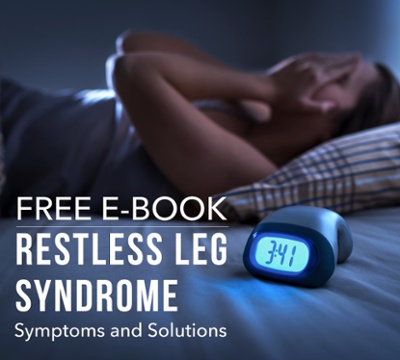Will Exercise Alleviate Restless Legs Syndrome?

According to the National Institute of Neurological Disorders and Stroke, Restless Legs Syndrome is a condition that affects nearly 12 million people. Some studies estimate that 10-15% of the population suffers from RLS, and many of those go undiagnosed. RLS is characterized by creepy-crawly, tingly, itchy, and achy legs that occur primarily in the evenings and at night. It interrupts sleep and has a negative impact on not just your rest, but your overall health. In the individual search for solutions, one question I hear is whether or not exercise will alleviate the symptoms of RLS.
To answer this question, it's helpful to understand more about what RLS is and how the symptoms appear. Restless Legs Syndrome is characterized by uncontrolled urges:
- The urge to move the legs with abnormal leg sensations
- It begins or worsens with inactivity or rest
- The sensations and urge to move are partially or totally relieved by walking
- It is worse in the evening or at night rather than in the day
Some people with RLS cannot sit still, with others it bothers them when they are trying to go to sleep. They are often unable to get to sleep and if they do fall asleep, are awakened because of the sensations. They will repeatedly kick or jerk their legs in an effort to get the sensations to stop. The only thing that seems to bring some relief is to get up and walk around and this is part of the medical definition of restless leg syndrome.
For that reason, many people wonder if exercise will stop it from happening. Exercise, like walking around, can bring temporary relief while the sensations are active. However, the pattern with RLS is that when you sit back down in the evening to rest or go back to sleep, the RLS returns. This begins an exhausting cycle: they get up to walk, return to rest or sleep, and the sensations return. It's a tiresome cycle.
However, some evidence in medical studies suggests that exercise during the day may have some positive effects on RLS, though it's difficult to standardize the testing. Each person is different. I recommend trying it and seeing what difference it makes for you. Exercise is always a good idea, and if it brings you any relief from RLS, make that a consistent part of your daily health habits. Exercise can include stretching or yoga and any type of aerobic activity: walking, running, swimming, etc. Pay attention to your body and notice any changes. If it helps, continue to do it.
Medications are available but have inconsistent results in improving RLS and also have unwanted side effects. The good news is that 80% of people who have both RLS and a vein condition DO find relief from their RLS symptoms after vein treatment.



